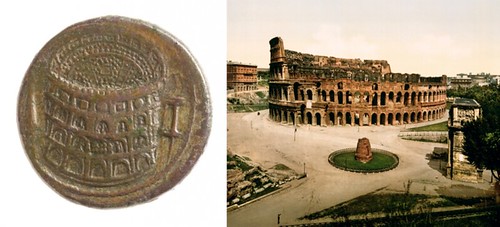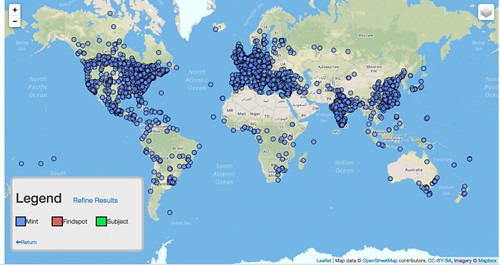
PREV ARTICLE
NEXT ARTICLE
FULL ISSUE
PREV FULL ISSUE
ANCIENT ARCHITECTURE THROUGH COINAGE
Forbes.com recently published an article by Sarah Bond, an Assistant Professor of Classics at the University of Iowa. She writes about ancient architecture and how coins are an overlooked yet valuable resource in our understanding of the topic. Resources from the American Numismatic Society illustrate the piece. Here's an excerpt.
-Editor

The reconstruction of ancient buildings is often a difficult undertaking in a world where most ancient structures either no longer exist or have been heavily modified. However, a massive online coinage database with over 600,000 objects and a new book on ancient “architectural coinage” demonstrate that coins provide an abstract view of the buildings of antiquity which deserve more attention. The American Numismatic Society's database of coinage (called MANTIS) has over a half million objects in it. As the society notes, “These include coins, paper money, tokens, ‘primitive' money, medals and decorations, from all parts of the world, and all periods in which such objects have been produced.” You can search this database according to time period, mint, ruler, or a host of other categories. A newly launched image identifier for the coins of the Roman empire, called OCRE “Identify a Coin”, even helps students, teachers and non-specialists to identify a coin simply by image–and provides a great tool for novice numismatists.

Additionally, you can access the entire database through an interactive map that allows you to explore where each object was likely minted. The ANS often supplies large color photographs of each piece of coinage along with this metadata. The citation information within the database entries is also linked to dozens of other digital projects that provide secure information about the ancient world; a digital humanities citation approach called Linked Ancient World Data (LAWD). Beyond just exploring this massive database, the holdings of ANS provide the foundation for a number of studies of ancient and modern coinage. A new book on the subject of “architectural coinage” published by the ANS presents a number of stunning buildings often depicted on the reverse side of Roman coinage. Written by Nathan T. Elkins, the monograph examines how we can go beyond coinage as a means of reconstructing ancient buildings that may no longer exist, and begin to appreciate this numismatic evidence as a way of accessing how Romans and their rulers may have felt about architecture generally. Elkins reveals how coinage could be used as propaganda by rulers, as a means of propping up their ideological programs and as a way of celebrating certain Roman ideals.
To read the complete lot description, see:
The Numismatic Bibliomania Society is a non-profit organization promoting numismatic literature. See our web site at coinbooks.org. To submit items for publication in The E-Sylum, write to the Editor at this address: whomren@gmail.com To subscribe go to: https://my.binhost.com/lists/listinfo/esylum All Rights Reserved. NBS Home Page Contact the NBS webmaster 
|